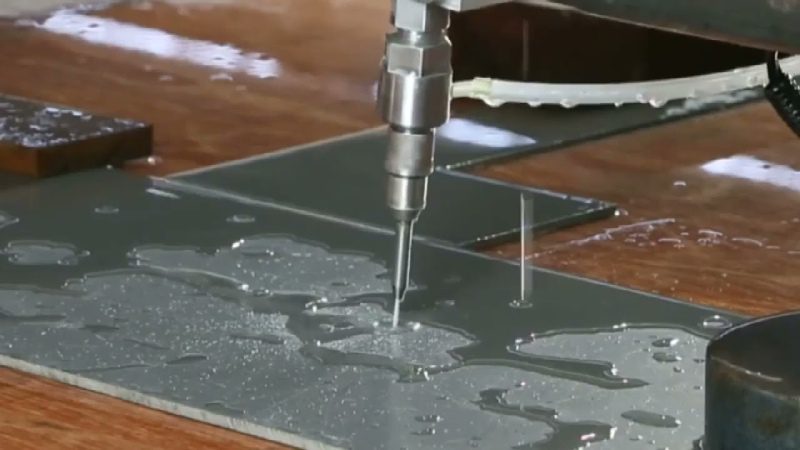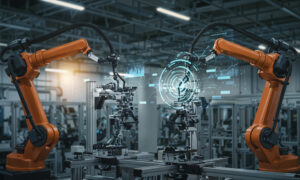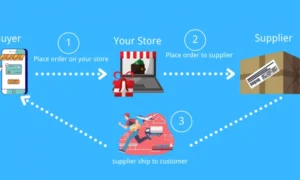Precision defines progress in modern manufacturing. In industries such as aerospace and defense, a single flaw in a component can compromise safety, performance, and reliability. As materials evolve, so does the need for cleaner, faster, and more adaptable cutting solutions.
Waterjet technology has emerged as a preferred method because it combines cold cutting with exceptional control, reducing thermal distortion and material waste.
This article explores seven key considerations for implementing this technology in high-precision environments. It enables manufacturers to make informed decisions that lead to improved results, consistent accuracy, and long-term productivity.
I. Material Compatibility and Thickness
Before adopting any new cutting process, understanding material behavior is essential. Aerospace and advanced manufacturing rely on diverse materials, including titanium, carbon fiber, ceramics, and hardened alloys. This system can handle most of these without altering the material structure since it cuts without heat.
However, success depends on matching pressure levels, abrasive type, and cutting speed to each material. Testing different combinations ensures smoother edges and minimal kerf width, especially when working with composites or layered metals. Careful evaluation in this stage determines both precision and efficiency in long-term production.
II. Machine Setup and Process Calibration
Once material compatibility is confirmed, setup becomes the next priority. Accurate calibration influences edge quality, part repeatability, and production speed. Operators must align nozzles correctly, maintain consistent pressure, and verify software parameters before starting a run.
Regular inspection of orifices, mixing tubes, and abrasives prevents clogging and performance loss. Investing time in calibration not only protects expensive materials but also helps achieve the exact tolerances that aerospace clients expect. Reliable process control transforms a powerful cutting system into a true precision tool.
III. Precision and Tolerance Requirements
In high-precision manufacturing, even the smallest variation can affect overall performance. Aerospace components, in particular, demand extreme accuracy, with consistency non-negotiable. Purchasing precision-cutting equipment is a major investment, but the real value comes when the tools are reliable and supported by skilled engineering.
Modern waterjet systems enable manufacturers to achieve consistent accuracy across metals, composites, and advanced materials without generating heat or distortion. Many companies rely on trusted providers like OMAX for dependable solutions that balance cutting precision with long-term stability. Precision also depends on proper calibration, nozzle alignment, and controlled pressure settings. When all these elements work together, manufacturers gain greater control, reduce waste, and maintain the accuracy needed for high-performance production.
IV. Software Integration and Automation
Advanced software and digital integration play a major role in modern cutting operations. CAD/CAM programs enable designers to translate 3D models into optimized tool paths directly. When paired with automation and sensors, the process becomes smarter and faster.
In aerospace manufacturing, this level of integration ensures consistency between prototypes and full-scale production. Automated systems reduce human error, while monitoring tools track water pressure, abrasive use, and cutting speed in real time. The result is a workflow that supports continuous improvement and data-driven decision-making.
V. Maintenance and Operational Efficiency
Maintenance directly affects long-term performance and cost control. These systems operate under high pressure, which means pump seals, orifices, and hoses need regular attention. Establishing a preventive maintenance plan keeps the system in top shape and reduces downtime.
Operator training is equally important. Well-trained technicians recognize early signs of wear and make quick adjustments that prevent damage. A disciplined maintenance culture ultimately extends equipment life, improves cut quality, and ensures predictable results across production cycles.
VI. Process Economics and Sustainability
Cost efficiency and sustainability are increasingly intertwined in aerospace production. This cutting process stands out for its minimal waste and clean operation. The absence of heat reduces scrap, and closed-loop water recycling systems help conserve resources.
Abrasive consumption and disposal remain key cost factors, so using efficient mixing setups can significantly reduce waste. Manufacturers who focus on sustainability not only lower costs but also align with global environmental standards, a growing requirement in aerospace supply chains.
VII. Certification, Quality, and Compliance
Precision manufacturing must meet strict quality benchmarks. Compliance with ISO 9001 and AS9100 standards ensures that every step of the process is documented and traceable. This method supports these requirements by producing clean, repeatable results without thermal distortion.
Documenting setup parameters, inspection records, and calibration data strengthens credibility with aerospace clients. Consistency in quality not only meets contractual obligations but also builds long-term trust within the supply chain.
Conclusion
Implementing this technology is more than installing a machine. It involves thoughtful planning, reliable partnerships, and continuous process control. By focusing on materials, precision, maintenance, and compliance, manufacturers can achieve exceptional accuracy with minimal waste. As aerospace technology advances, precision cutting methods will remain central to achieving performance, sustainability, and design freedom across the next generation of high-value manufacturing.


































